
How one surprising image kick-started the 1990s
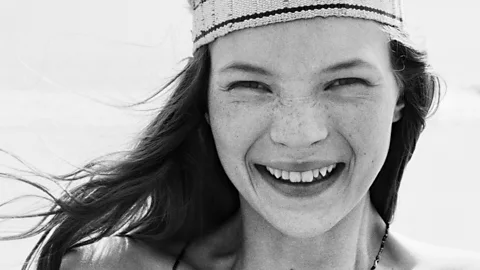 Estate of Corinne Day/ Bridgeman Images
Estate of Corinne Day/ Bridgeman ImagesAn iconic image of Kate Moss marked an explosive moment of change in Britain – and helped to create the culture we now live in. It's among the photographs displayed in a new exhibition that celebrates the photography of The Face magazine.
Freckled and fresh-faced, a 16-year-old Kate Moss laughs, make-up-free and unadorned except for a delicate string of beads and a headdress made of feathers – the image on the cover of The Face magazine in July 1990 was perfectly timed. It captured a moment in Britain when the nation's youth was coalescing around a burgeoning acid-house movement, with impromptu parties filling disused warehouses, aircraft hangars and fields across the country. The escapist, chaotic rave scene that spanned class and race was an explosion of optimism and euphoria amid difficult times of high unemployment and a weak economy. The magazine's cover portrait marked a new era, with Kate Moss the coming decade's feather-crowned queen.
It was a moment of moving on from the aspirational, stylised glamour of the 80s, and into a more pared-down and realistic phase – Lee SwillinghamThe iconic portrait by Corinne Day is among the photographs on display at London's National Portrait Gallery in the exhibition The Face Magazine: Culture Shift. Lee Swillingham, former art director of The Face – along with photographer Norbert Schoerner – came up with the idea for the show, which charts the British style magazine's photography through the years. "For me, The Face really was the best chronicler of British youth culture," says Swillingham, who co-curated the exhibition with NPG's senior curator of photographs, Sabina Jaskot-Gill.
The Moss portrait was "a breath of fresh air," Swillingham tells the BBC. "It was a moment of moving on from the aspirational, stylised glamour of the 80s, and into a more pared-down and realistic phase in fashion terms. That whole photography style went hand in hand with a more attainable sense of beauty."
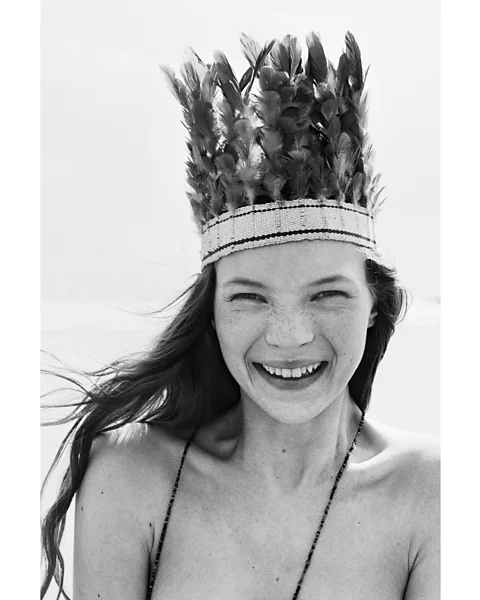 Estate of Corinne Day/ Bridgeman ImagesA 16-year-old Kate Moss photographed by Corinne Day for the "Summer of love" issue of The Face, July 1990 (Credit: Estate of Corinne Day/ Bridgeman Images)
Estate of Corinne Day/ Bridgeman ImagesA 16-year-old Kate Moss photographed by Corinne Day for the "Summer of love" issue of The Face, July 1990 (Credit: Estate of Corinne Day/ Bridgeman Images)It was Swillingham's predecessor as art director Phil Bicker who initially championed the emerging photographer Corinne Day and the then unknown teenage model Kate Moss. "I was searching for someone who would be 'the face of The Face'," Bicker tells the BBC – not a glossy, "aspirational" fashion muse but a natural, real one, in tune with the magazine's readership. "Kate had the Britishness and youthfulness that The Face represented – she was funny, and laughed a lot. She seemed to me a person first, and a model second." Inside the July 1990 issue of the magazine, Moss is shown on the beach at Camber Sands on the south coast of England, messing about guilelessly in a series of photos striking in their simplicity and naturalness.
It was "a perfect storm," says Bicker. "And despite Kate's subsequent global profile and extensive career, she's still associated with The Face, and that defining moment which launched her career. It was shot in a way by Corinne that allowed Kate’s personality and positive energy to come through, so that when people saw the images, they forgot they were looking at a styled fashion story, instead believing this was a portrait of Kate unadorned."
Moss nor her agency particularly liked this raw, slightly gawkish depiction of the model, according to Sheryl Garratt, then The Face editor, writing in The Observer in 2000. The shoot has nonetheless remained a cultural touchstone, embodying a moment in time. The magazine's founder Nick Logan later said: "At that time, at the start of the rave scene, I remember saying, 'let's aim it at those people dancing in fields'." The 1990 images of Moss reflected not only a new aesthetic but also a deeper cultural change in the UK, with the cover line of the magazine referring to a "summer of love", in reference to the exploding outdoor rave scene.
More like this:
• Eight striking images that define America
• The photographs that skewer British peculiarities
• The indigenous American supermodel bringing change
"It was a real moment of transition," Angela McRobbie, professor of cultural studies at Goldsmiths, University of London, tells the BBC. "It marked a shift, when a subculture moved into mass visibility. Rave culture opened its doors to a much vaster section of boys and girls who would never have gone dancing in that way before. It was a new form of leisure, and a youth culture becoming mass leisure."
Whereas the post-punk music-and-fashion scene had emanated more from an "art-school" milieu, argues McRobbie, the rave scene at its height was a much broader movement that grew organically from economic and social circumstances. "The working-class rave scene was an escape from the mundanity of post-industrial Britain, where the skilled labour market had declined. Rave gave working-class kids a sense of freedom," she says.
It was a sense of empowerment, McRobbie continues, which was later echoed in Morvern Callar, the 2002 film by Scottish director Lynne Ramsay, which starred Samantha Morton. "It's based on a book by Alan Warner," says McRobbie, "and it's about working-class girls in Aberdeen, stacking shelves". It charts a gradual awakening of the protagonist's sense of agency and self, and – like Day's image of Moss on the beach – emanates a mood of escape, freedom in nature, and a sense of possibility.
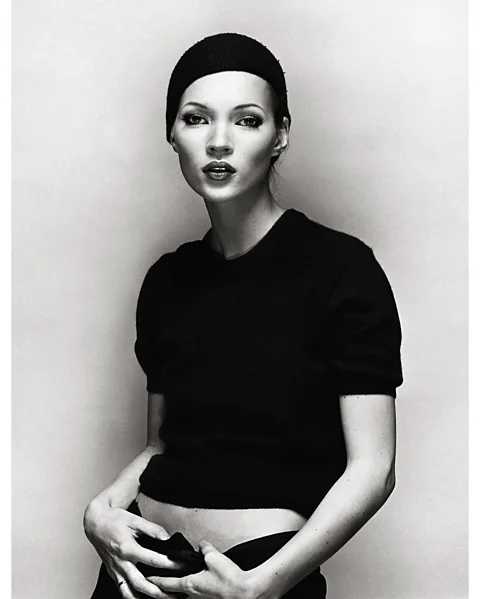 Glen LuchfordKate Moss photographed by Glen Luchford for the March 1993 issue of The Face (Credit: Glen Luchford)
Glen LuchfordKate Moss photographed by Glen Luchford for the March 1993 issue of The Face (Credit: Glen Luchford)"The rave scene was a gamechanger in terms of gender," says McRobbie, whose book Feminism, Young Women and Cultural Studies traces the evolution of British subcultures from the 1970s. "For boys, it was a new moment of emotional, non-aggressive sexuality, partly because of the [drug] ecstasy, and the expression of feelings of love and joy, and dancing for five to seven hours non-stop, which boys would have done before in gay or queer spaces like Heaven in London. But for your average working-class boy to enjoy that physical pleasure, openness and freedom, that was new. And for girls it was a time of getting in touch with their physical bodies, too, dancing for hours."
But despite the "summer of love" headline on The Face's 1990 cover, according to McRobbie, this cultural moment in the UK had nothing much in common with the original 1960s Summer of Love in the US. "Sociologists wouldn't put those two movements together," she says – the hippy Summer of Love in San Francisco in 1967 was "qualitatively different". "[The rave scene] was not connected to an overtly political agenda. The San Francisco Summer of Love was a time of social change that grew from Berkeley University and was pro-civil rights. It was overtly political and, with [Allen] Ginsberg involved, literary."
Young style rebelsIf there was a precursor of the British rave movement, it was the Swinging '60s, which were imbued with a mood of liberation and the breaking down of past hierarchies. "The Swinging '60s were associated with a freeing up and a breaking down of barriers, in class, sexuality and gender," says McRobbie. "It was designer Mary Quant [creator of the mini skirt], the Pill. Doors were opening, and for working-class young women it was an important time of excitement and freedom, particularly in urban centres such as London and Glasgow."
The It girl of that moment was the gamine, teenage model Twiggy – with her waifish figure, cheeky smile and working-class origins. Bicker told The Observer: "Kate hadn't been modelling for very long but, even in her awkwardness, she had that thing about her that Twiggy had in the 60s, a freshness that matched the times." She was, in the way she defined her era, Moss's predecessor – along with the late Marianne Faithfull, the "wide-eyed poster girl for the Swinging '60s", who later in life became good friends with the model.
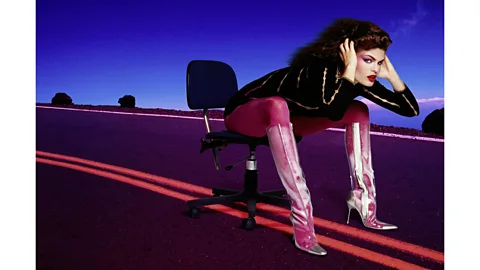 Inez & Vinoodh/ courtesy of the Ravestijn GalleryA shot by Inez & Vinoodh from the September 1994 issue typified the magazine's art direction under Lee Swillingham (Credit: Inez & Vinoodh/ courtesy of the Ravestijn Gallery)
Inez & Vinoodh/ courtesy of the Ravestijn GalleryA shot by Inez & Vinoodh from the September 1994 issue typified the magazine's art direction under Lee Swillingham (Credit: Inez & Vinoodh/ courtesy of the Ravestijn Gallery)It wasn't long before the new aesthetic sparked by the summer of love shoot was influencing the commercial world, most noticeably in advertising campaigns by Calvin Klein with Moss for Obsession, and with Moss and Mark Wahlberg for the brand's underwear. In subsequent issues, The Face continued to reflect the optimistic feeling about the decade ahead – one cover story shot by Day, and titled Young Style Rebels, featured "five faces for the 90s" with Moss, Rosemary Ferguson, Lorraine Pascale and other models who departed from the 80s "glamazon" norm. "After the supermodels, a new generation is coming through with new ideas and attitude" said the introduction.
Just as the Swinging London of the 1960s was a moment of great creativity and entrepreneurship, so was the 1990s – Professor Angela McRobbieThe next time the Moss-Day pairing caught the public's attention was with a 1993 fashion story for British Vogue, in which a very thin Moss posed in underwear in a downbeat bedroom. They were again defiantly unglitzy images, but this time – perhaps because of the context of the venerable magazine in which they appeared – they provoked outrage. Grunge fashion, waif style and "heroin chic" became phrases used in the British tabloid newspapers.
The Face was soon moving on to its next phase of the 90s – a succession of new lads and ladettes, grunge and Britpop bands, and edgy young British artists (known collectively as "the YBAs") all adorned the covers of big-selling issues of the magazine, which from 1993 had a fresh look, courtesy of Swillingham, the new art director. "There was a kind of shift. From reality to anti-reality, technology and retouching, a more kinetic, colourful feel," he says. Swillingham commissioned photographers such as Norbert Schoerner and Elaine Constantine, and the resulting aesthetic was, again, soon adopted by the commercial world, with numerous ads influenced by the colour-drenched, hyperreal style – notably a 1995 ad for Levi's.
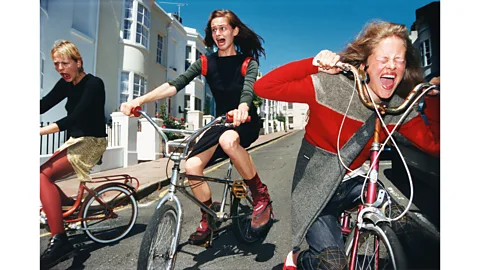 Elaine ConstantineGirls on Bikes (Sarf Coastin'), December 1997, by Elaine Constantine – The Face chronicled fashion and youth culture through its photography (Credit: Elaine Constantine)
Elaine ConstantineGirls on Bikes (Sarf Coastin'), December 1997, by Elaine Constantine – The Face chronicled fashion and youth culture through its photography (Credit: Elaine Constantine)New Labour was on the horizon. The Face was, says McRobbie, central to the "post-industrial creative economy, which was welcomed by Tony Blair and New Labour". In 1997, artists, pop bands – including Oasis – and fashion folk were invited to 10 Downing Street by then British Prime Minister Blair. In the same year, Liam Gallagher and Patsy Kensit adorned the front cover of prestigious US magazine Vanity Fair with the coverline "London swings again", and the YBAs' Sensation exhibition showed at the Royal Academy. Cool Britannia was born. "Just as the Swinging London of the 1960s was a moment of great creativity and entrepreneurship, so was the 1990s," says McRobbie.
Then and nowSome have argued that the late 80s and early 90s rave movement in Britain was a moment of conscious uprising and egalitarian protest, a uniquely anarchic outpouring with its hedonistic, unruly origins in the country's chaotic and distinctive folk rituals. It is argued that it was a coming together of all genders, races and classes, and a significant movement that resonates now – and has enjoyed a recent revival. For others, it is a collective memory of joy. There's no doubt the movement drew from a broad sweep of society – its adherents gathered from far and wide, from the football terraces, the suburbs, the inner cities, student campuses, the home counties. And certainly, there were protests around the introduction by the government of a bill brought in to end illegal raves.
However, according to McRobbie, rave was not a movement about ideas or politics. "The rave scene and the waif look weren't political. The movement evolved and became about jobs and entrepreneurship, eventually becoming the creative industries in fashion, music and more. The legacy of The Face is that it kickstarted a valuable – to the economy – celebrity culture, big industries and sponsorship deals."
Ultimately the only way the industry could take some control over the young disruptors was to embrace its protagonists – Phil BickerLee Swillingham echoes this: "Fashion got industrialised in the 2000s, brands got bigger, and were bought out by big groups. High fashion became industrialised, and The Face was part of that change. The magazine started getting more advertising, though we were still outsiders." This phase in pop culture of the late 2000s and 2010s – which was dominated by a grimy, hedonistic look, and the sounds of bands like The Strokes and The Libertines – was later revived and reincarnated in the 2020s as the Indie Sleaze aesthetic.
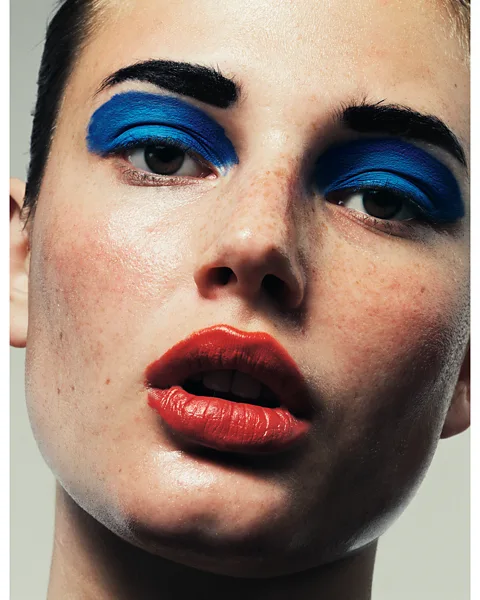 David SimsFace Off by David Sims January 1998 is among the images displayed in The Face Magazine: Culture Shift at the National Portrait Gallery (Credit: David Sims)
David SimsFace Off by David Sims January 1998 is among the images displayed in The Face Magazine: Culture Shift at the National Portrait Gallery (Credit: David Sims)Sadly photographer Corinne Day died from a brain tumour in 2010 – her photographs have been exhibited at the V&A, Tate Modern, Saatchi Gallery and Photographers' Gallery, among others. Many of the other names associated with the fashion and photography of The Face became central to the fashion-celebrity industrial complex – not least, of course, Kate Moss, as iconic as ever. Swillingham went on to work at Vogue with Edward Enninful (who had been at fellow style magazine ID). Photographers including Ellen von Unwerth, Nigel Shafran, Kevin Davies, David Sims, Glen Luchford, Juergen Teller, Inez & Vinoodh, Elaine Constantine and others went on to have profitable careers in the commercial world, "at the centre of the contemporary fashion industry" says Swillingham, who is now consultant art director of Harper’s Bazaar Italia and has his own creative agency, Suburbia. As Bicker – now an international, award-winning creative director – puts it: "Ultimately the only way the industry could take some control over the young disruptors was to embrace its protagonists."
It is perhaps difficult to imagine now in our digital age, but there was a sense of cultural cohesion about this time – and the way it was distilled and chronicled – that we won't see again. As McRobbie puts it: "The Face marks out a pathway to social fragmentation. There was a coherence which was impressive about The Face, and that has been dismantled in the digital age, which is a loss." Swillingham loved the "ephemeral" nature of things then, and remembers his time at The Face as the most exciting job he ever had: "We didn't have time to think about it, we were in it."
The Face Magazine: Culture Shift is at the National Portrait Gallery, London from 20 February to 18 May.
--
If you liked this story, sign up for The Essential List newsletter – a handpicked selection of features, videos and can't-miss news, delivered to your inbox twice a week.
For more Culture stories from the BBC, follow us on Facebook, X and Instagram.
PhotographyBritish cultureFashionArt and designFeaturesWatch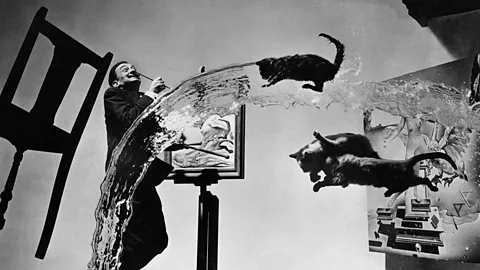 How the surreal 'Dali Atomicus' was captured
How the surreal 'Dali Atomicus' was capturedIn 1948 a famous artist and an innovative portrait photographer attempted to create something unbelievable.
10 Dec 2024Photography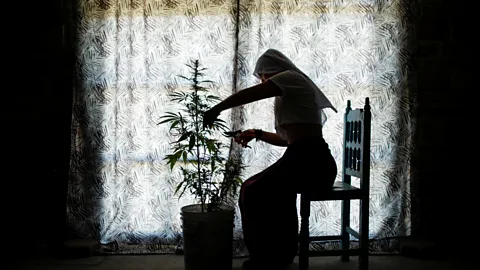 'Weed nuns' v narcos: Meet Mexico's Sisters of the Valley
'Weed nuns' v narcos: Meet Mexico's Sisters of the ValleyThe Sisters of the Valley are a group of women defying narco traffickers and tradition at the same time.
5 Jun 2024Photography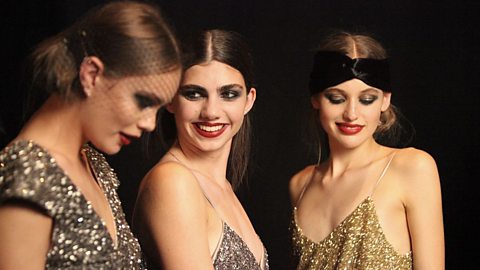 What your clothes reveal about you
What your clothes reveal about youProfessor Richard Thompson Ford explores what our clothes reveal about us and our society.
9 Nov 2023Style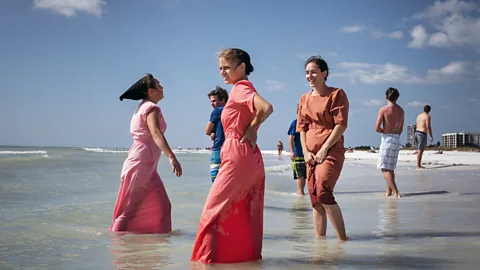 Where the Amish go on holiday
Where the Amish go on holidayPhotographer Dina Litovsky has been photographing the Amish 'Las Vegas' since 2018.
9 Nov 2023Photography The modern obsession of sneaker collecting
The modern obsession of sneaker collectingHow a practical sports shoe made the leap to become a highly desirable fashion item.
11 Apr 2023Fashion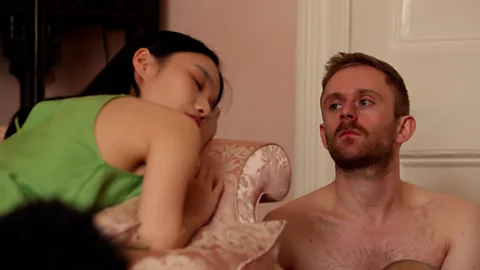 Yushi Li's new take on erotic photography
Yushi Li's new take on erotic photographyChinese-born, London-based photographer Yushi Li explores how the male body can be eroticised in pictures.
11 Jul 2022Photography The incredible afterlife of an abandoned luxury hotel
The incredible afterlife of an abandoned luxury hotelAmilton Neves Cuna documents the history of his country through the lens of an iconic Mozambiquan building.
22 Mar 2022Photography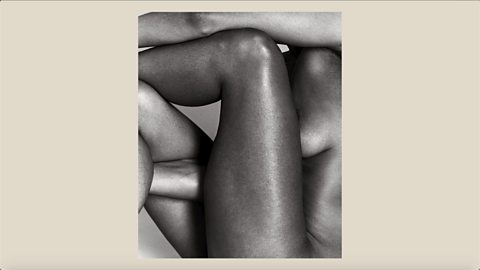 The naked pictures that question how we look at the body
The naked pictures that question how we look at the bodyPhotographer Mikael Schulz takes naked pictures that convey a radical message of self-acceptance and diversity.
16 Mar 2022Photography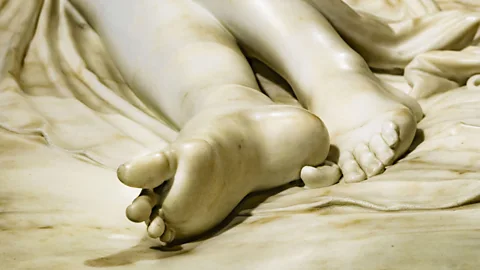 How an 'erotic' body part inspires a legendary designer
How an 'erotic' body part inspires a legendary designerWhat exactly inspires the haute couture designer and self-confessed cobbler, Manolo Blahnik?
4 Mar 2022Fashion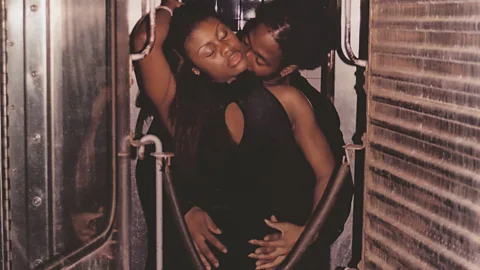 The iconic images capturing the magic of the 80s
The iconic images capturing the magic of the 80sIn his images from the 80s, Jamel Shabazz captures the vibrancy of life underground in the New York City subway.
3 Mar 2022Photography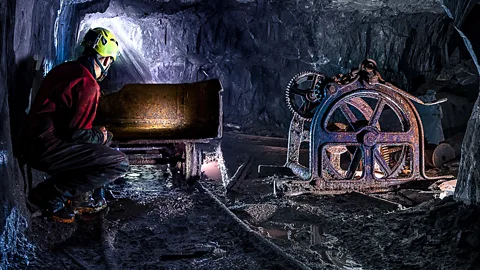 Slate mines: Hidden world's beauty revealed by explorer
Slate mines: Hidden world's beauty revealed by explorerThe hidden world of forgotten slate mines in north Wales has been revealed by a photographer.
23 Feb 2022Photography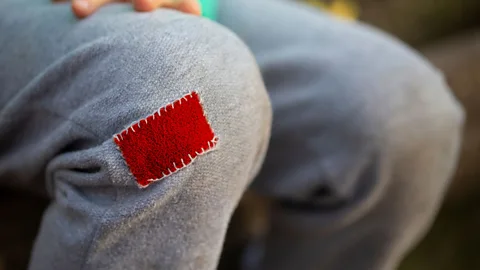 How carbon has gone out of fashion
How carbon has gone out of fashionIt’s 2045 and we’re now living in a net zero society. This is the story of how we did it.
23 Feb 2022Fashion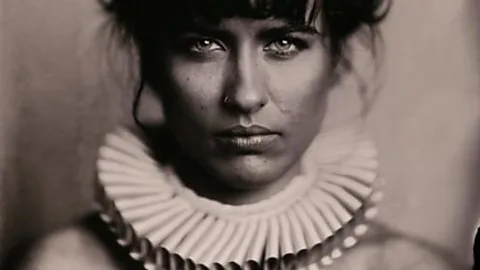 Photographer's images 'like ghosts coming out the mist'
Photographer's images 'like ghosts coming out the mist'Guy Bellingham is a wet plate photographer, using a technique that was first developed in 1851.
23 Feb 2022Photography The stunning photos of an island's shipwreck graveyard
The stunning photos of an island's shipwreck graveyardA photographer is paying tribute to the lives lost to a small island known as a graveyard for shipwrecks.
23 Feb 2022Photography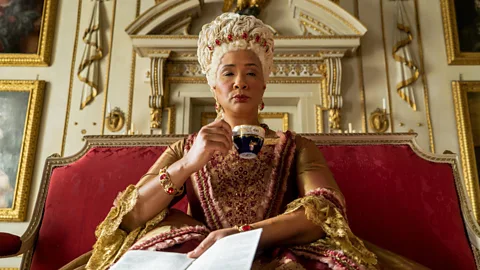 What if we reimagined the English Renaissance?
What if we reimagined the English Renaissance?A photographic study of the slang term 'flexing'.
23 Feb 2022Photography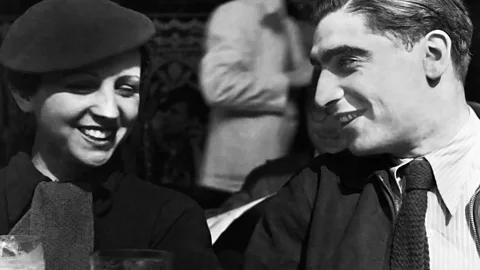 The world-famous couple that changed photography forever
The world-famous couple that changed photography foreverThe most iconic couple in the history of war photography were not actually who they claimed to be.
23 Feb 2022Photography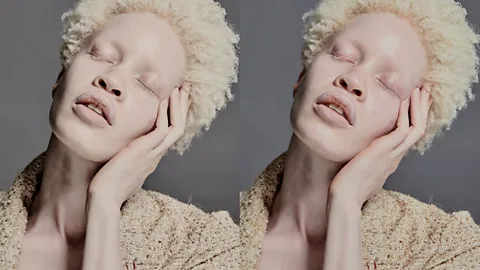 The dark history of photography lighting
The dark history of photography lightingCelebrity photographer Marc Baptiste reveals a lesser known but widespread bias in photography.
23 Feb 2022Photography The open-air lab testing the world's deadliest poisons
The open-air lab testing the world's deadliest poisonsDugway Proving Ground is one of the most secretive of American military zones.
23 Feb 2022Photography The black Britons who've 'broken the glass ceiling'
The black Britons who've 'broken the glass ceiling'British photographer John Ferguson hopes to "inspire" young black Britons through his photos.
23 Feb 2022Photography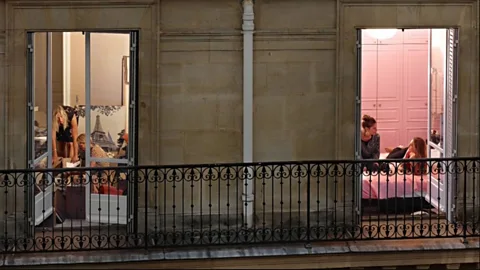 Intimate snapshots into the private world of your neighbours
Intimate snapshots into the private world of your neighboursGail Albert-Halaban has been photographing people through their windows for over 10 years.
23 Feb 2022PhotographyMore6 hrs ago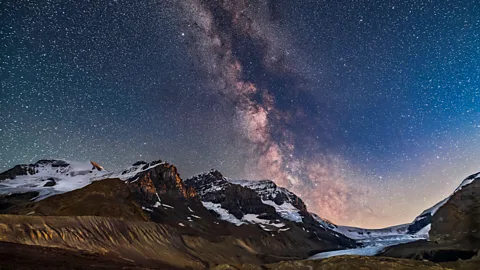 Canada's accessible dark-sky sanctuary
Canada's accessible dark-sky sanctuarySpanning 11,000 sq km of protected, pristine wilderness, Jasper National Park offers a one-of-a-kind destination for stargazers.
6 hrs agoTravel8 hrs ago The Brazilian film that could upset the Oscars
The Brazilian film that could upset the OscarsStarring Fernanda Torres and centring on a family torn apart by Brazil's military dictatorship, I'm Still Here is up for three major awards – and could pull off an upset on the night.
8 hrs agoCulture9 hrs ago When should you throw away your kitchen sponge?
When should you throw away your kitchen sponge?We use them to clean the dishes we eat off, but your kitchen sponge is a damp, crumb-filled environment that is perfect for bacteria to thrive in. Is a washing up brush better?
9 hrs agoFuture1 day ago Is it time to change how we buy travel souvenirs?
Is it time to change how we buy travel souvenirs?The BBC looks into the psychology behind travel souvenirs: why we buy them, their impact on local communities and the planet, and how we can shop more thoughtfully.
1 day agoTravel1 day ago How a tiny village became India's YouTube capital
How a tiny village became India's YouTube capitalIn Tulsi, a village in central India, social media has sparked an economic and social revolution. It's a microcosm of YouTube's effect on the world.
1 day agoFutureAP by OMG
Asian-Promotions.com |
Buy More, Pay Less | Anywhere in Asia
Shop Smarter on AP Today | FREE Product Samples, Latest
Discounts, Deals, Coupon Codes & Promotions | Direct Brand Updates every
second | Every Shopper’s Dream!
Asian-Promotions.com or AP lets you buy more and pay less
anywhere in Asia. Shop Smarter on AP Today. Sign-up for FREE Product Samples,
Latest Discounts, Deals, Coupon Codes & Promotions. With Direct Brand
Updates every second, AP is Every Shopper’s Dream come true! Stretch your
dollar now with AP. Start saving today!
Originally posted on: https://www.bbc.com/culture/article/20250217-how-one-surprising-photo-of-a-teenage-kate-moss-kick-started-the-1990s?ocid=global_culture_rss
